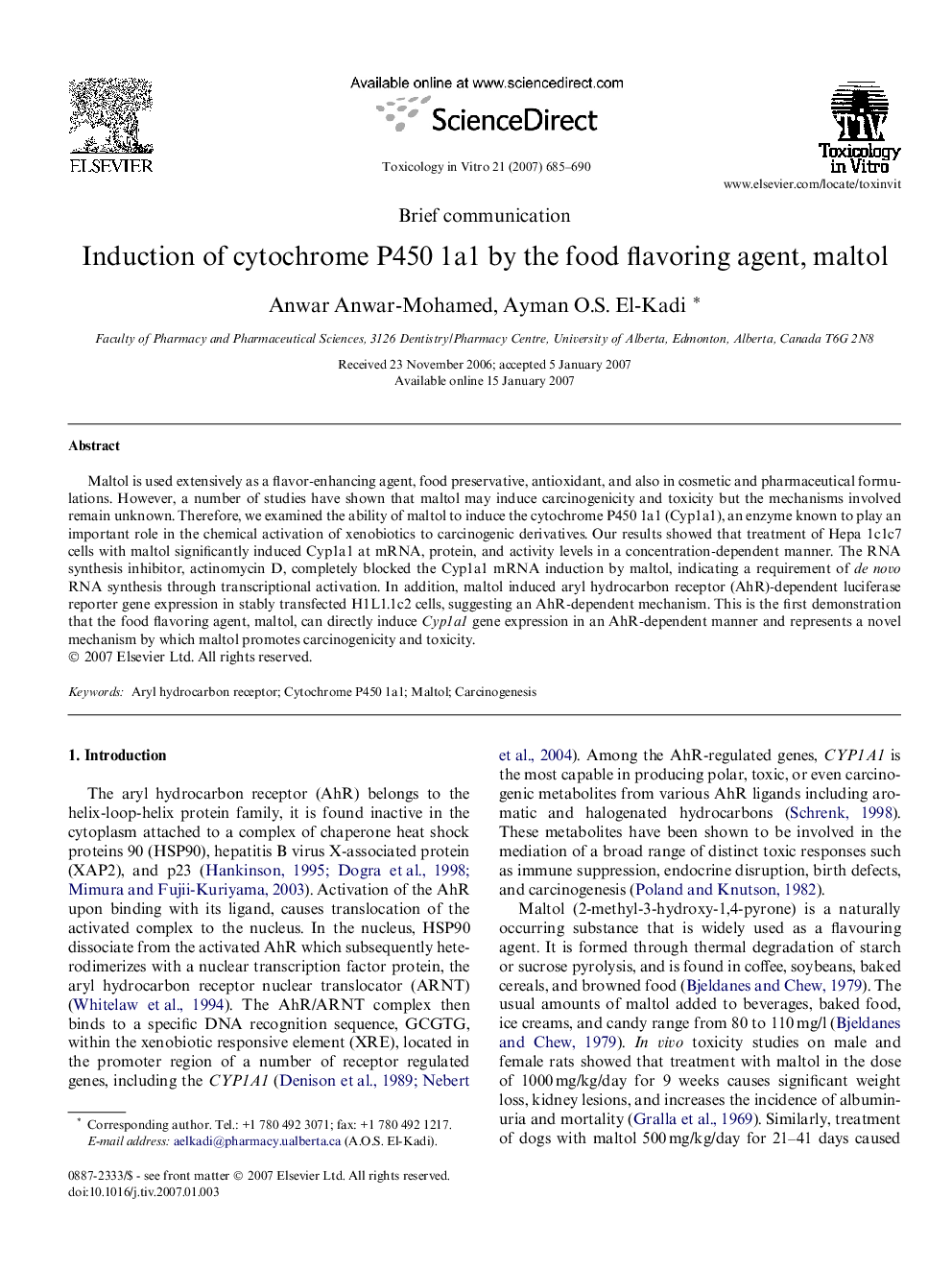| Article ID | Journal | Published Year | Pages | File Type |
|---|---|---|---|---|
| 2603309 | Toxicology in Vitro | 2007 | 6 Pages |
Maltol is used extensively as a flavor-enhancing agent, food preservative, antioxidant, and also in cosmetic and pharmaceutical formulations. However, a number of studies have shown that maltol may induce carcinogenicity and toxicity but the mechanisms involved remain unknown. Therefore, we examined the ability of maltol to induce the cytochrome P450 1a1 (Cyp1a1), an enzyme known to play an important role in the chemical activation of xenobiotics to carcinogenic derivatives. Our results showed that treatment of Hepa 1c1c7 cells with maltol significantly induced Cyp1a1 at mRNA, protein, and activity levels in a concentration-dependent manner. The RNA synthesis inhibitor, actinomycin D, completely blocked the Cyp1a1 mRNA induction by maltol, indicating a requirement of de novo RNA synthesis through transcriptional activation. In addition, maltol induced aryl hydrocarbon receptor (AhR)-dependent luciferase reporter gene expression in stably transfected H1L1.1c2 cells, suggesting an AhR-dependent mechanism. This is the first demonstration that the food flavoring agent, maltol, can directly induce Cyp1a1 gene expression in an AhR-dependent manner and represents a novel mechanism by which maltol promotes carcinogenicity and toxicity.
